Spotlight
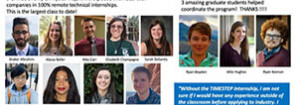
TIMESTEP Tech Internship
The TIMESTEP Internship offers UA majors in Astronomy, Physics and Math the opportunity to gain valuable industry experience prior to graduation. This article details the experiences of one intern, UA astronomy and physics major Elizabeth Champagne, and her supervisors at ELE Optics, a UA FORGE partner. TIMESTEP is currently looking for industry partners for the Summer 2021 program and student applications will be due March 31, 2021. Details can be found HERE.
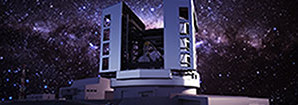
GMT Mirror #6 Casting
Here is a live-streaming link for the high-temperature portion of the casting of GMT Mirror #6 (Saturday March 6 from 1:30pm MST to 2:30pm MST).
We are virtually celebrating the creation of the sixth segment of the Giant Magellan Telescope’s primary mirror array during the High Fire phase. This casting of an 8.4-meter telescope mirror is a major milestone moment in the engineering process. This one-of-a-kind instrument will allow astronomers to solve some of the mysteries of the Universe.
When completed the Giant Magellan Telescope will be the largest and most powerful telescope in the world. The casting process uses an oven 40 feet in diameter to heat up 20 tons of glass to 2129° F. This unique fabrication process results in a lightweight honeycomb glass structure.
Here at the University of Arizona we are celebrating the achievement of this milestone. The Richard F. Caris Mirror Lab is the only place in the world where mirrors of this size are produced
The process is fascinating and you will have access to learn more and ask questions on Saturday March 6, 2021 from 1:30 - 2:30 pm MST.
This virtual event is being hosted by the Mt. Lemmon SkyCenter, where we engage people of all ages in the process of scientific exploration as we foster a deeper understanding of our Earth within the Universe.
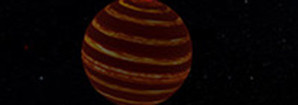
NASA’s Exoplanet Hunter Telescope Spies Powerful Winds and Jet Stream System in the Closest Brown Dwarfs
Brown dwarfs are excellent and easier-to-study analogs of giant exoplanets. Hiding just two parsecs (6 or 7 light years, or 1.5 times the distance of the nearest star) from the Sun are two cool brown dwarfs that form the Luhman 16AB binary system (discovered by Kevin Luhman, a 1998 PhD of our Astronomy program). Studies of these systems can help understand how giant exoplanets look, unraveling their climates, wind patterns, and atmospheric dynamics. No telescope, however, is powerful enough to take detailed images of the disks of brown dwarfs to find out whether they are dominated by localized storms (vortices) or by a global jet stream system.
Steward Observatory and Lunar and Planetary Laboratory Associate Professor Daniel Apai and his team used a novel approach to deduce the atmospheric properties of Luhman 16B. With the help of NASA’s TESS exoplanet hunter telescope, they observed how the brown dwarf’s brightness changes over a hundred rotations. These changes — and the analysis of their periodicity — revealed that Luhman 16B is home to powerful winds and an exciting and complex jet stream system.
This figure shows the main results of the story. This Youtube video also summarizes the data and results. The University of Arizona press release can be found HERE. The journal paper (may need a subscription) can be found HERE.
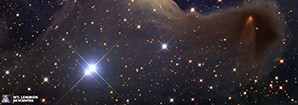
Free Zoom Backgrounds from Mt. Lemmon Sky Center Photos
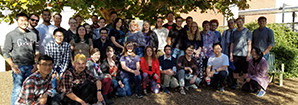
Apply to The University of Arizona Astronomy Graduate Program
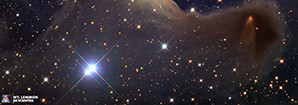
Steward Observatory Prize Fellowship in Theoretical and Computational Astrophysics
NOTE THAT THE DEADLINE PASSED IN MID-DECEMBER 2020
The Steward Observatory at the University of Arizona invites applications for the Steward Observatory Prize Postdoctoral Fellowship in Theoretical and Computational Astrophysics. The successful candidate will lead a high caliber independent research program as well as collaborate with theoretical and observational colleagues in the department. Candidates are expected to support an equitable and diverse scholarly environment in research, mentoring, and service. Steward Observatory provides a stimulating research environment, with an active program of seminars, conferences, and visitors. The department is home to a wide range of theoretical research programs, in topics such as general relativity and gravitation, cosmology, compact objects, astrophysical fluid dynamics, galaxy formation, star formation, and planet formation. Interested candidates are welcome to inquire with individual faculty about informal virtual visits. Candidates must have completed all requirements for the Ph.D. in astrophysics, astronomy, or a related field before the commencement of the fellowship in Fall 2021. The deadline for submission of all materials is December 14th, 2020. To apply click here.
Pages

For Public
Public events include our Monday Night Lecture Series, world-reknowned Astronomy Camp and Mt Lemmon Sky Center.

For Students
A good place to start if you want to become an undergrad major or grad student, or need to find our schedule of classes.

For Scientists
Find telescopes and instruments, telescope time applications, staff and mountain contacts, and faculty and staff scientific interests.




